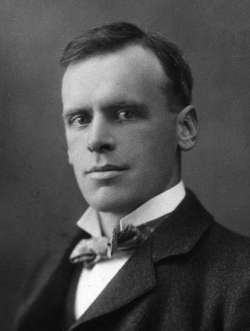Ernest Henry Starling

- Born
- 17 April 1866
- Died
- 2 May 1927 (age 61)
Starling’s work established how the body maintains fluid balance in the tissues, formulating what became known as Starling’s hypothesis. He also established the role of endocrine secretions and the mechanical controls on heart function.
In 1899, Starling took up the position of professor of physiology at University College London in 1899 and began his collaboration with William Bayliss.They demonstrated the nervous control of the peristaltic wave, the muscle action that results in food moving through the intestines.
In 1902, Starling and Bayliss isolated a substance that they called ‘secretin’. This is released into the blood through cells in the duodenum (the first part of the small intestine), and stimulates pancreatic digestive juice to be secreted into the intestine. The pair used the word ‘hormone’ to describe a substance produced by endocrine glands in one part of the body and carried in the blood to another part. This discovery revolutionised physiology and provided the basis for endocrinology to become a medical specialism.
Science has only one language, quantity, and only one argument, the experiment.
In 1918, Starling developed his ‘law of the heart’ which stated that the force of the muscular contraction of the heart was in direct proportion to how much the muscle was stretched. He also studied kidney function along with Ernest Basil Verney and demonstrated the reabsorption of water by tubules in the kidneys. Published in 1912, Starling’s Principles of Human Physiology became a standard text.
Starling was elected a Fellow of the Royal Society in 1899 and he was also a member of the Physiological Society.



